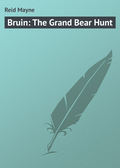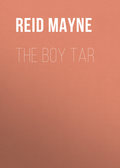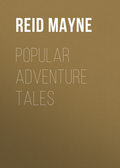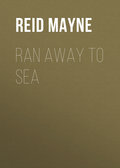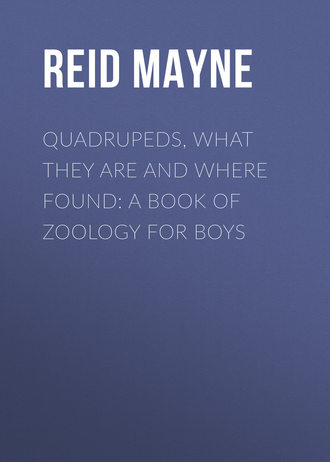
Майн Рид
Quadrupeds, What They Are and Where Found: A Book of Zoology for Boys
The Samboo, or Sambur, is another large species, not unlike the rusa. It is found in various parts of India, and especially in the tropical island of Ceylon. Several varieties of it have been described by naturalists.
In the Himalaya Mountains there exist two or three species of large deer, not very well-known. One is the Saul Forest Stag, or Bara-singa – a species almost as large as the Canadian wapiti. Another is the Marl, or Wallich’s Stag, which is also found in Persia. Still another species, the Sika, inhabits Japan; and yet another, the Baringa, or Spotted Deer of the Sunderbunds, dwells along the marshy rivers of this last-mentioned territory. Again, there is the Spotted Rusa, and other species, inhabitants of the Saul Forests. In fact, the number of species of Indian deer is far from being accurately ascertained, to say nothing of the very imperfect descriptions given of those that are actually known.
When we come to the great Oriental islands – the Isles of Ind – we find many new and beautiful species; some being large noble stags, while others are tiny graceful little creatures like gazelles.
In Sumatra and Borneo we have a distinct species of Sambur Deer; in Timor a smaller one; a third exists in Java; and a fourth in the Philippines. In Java, too, we find the beautiful little Muntjak; and another tiny variety in China, called the Chinese Muntjak.
Returning again to the Himalaya country, we encounter, in the plains south of this great chain, the Spotted Axis, so well-known from its beautiful markings, which resemble those of the fawn of our own fallow-deer. But it may be remarked that there are two or three species of spotted deer, and that they inhabit the plains of India – from the Himalayas southward to the Island of Ceylon. Ascending these great mountains, we encounter among their lower slopes another very singular species of cervine creature – the Musk Deer – which, though but little known, is one of the most interesting of its tribe; especially so, as it is from the secreting glands of this curious little animal that most of the celebrated perfume of commerce is obtained.
Crossing the Himalayas, and advancing northwards, we find upon the plains of Central Asia a species of deer, known among the Tartars as Siaga, and to our own naturalists as the Tail-less Roe. Several species entirely unknown to scientific men will yet be discovered, when the immense steppes of Asia come to be explored by observers capable of describing and classifying.
Like many another genus of animals, a complete monograph of the deer tribe would be of itself the labour of a life.
Chapter Twenty Three.
Quadrupeds with Pockets
In the year 1711 was brought to France, from the Island of New Guinea, an animal of an unknown species, and one that was singular in many respects; but especially so, from the fact of its having a double skin, covering a part of its belly, and forming a sort of pocket or pouch. This animal was Le Brun’s Kangaroo; very properly named after the naturalist who first described it, since it was the first of the marsupial or pouched animals known to the scientific world.
The Opossums of America were afterwards scientifically described; but it is only of late years that the numerous species and genera of pouched animals – constituting almost the entire mammalia of the Australian world – have become generally known to Europeans.
The peculiarity of the pouched animals is in reality the pouch, common to all of them. Otherwise they differ in many respects – some being carnivorous, others graminivorous, others insectivorous, and so on. In fact, among them we have forms analogous to almost all the different groups of ordinary mammalia. Some naturalists have even classified them in the different groups, but with little success; and it is perhaps better to keep them together, retaining the “pouch” as the common characteristic.
The marsupial animals bring forth their young before they are fully developed. The mother places the mouth, of what is little more than a foetus, to her teat; and there it remains till it is able to go alone. The pouch covers the teats, and serves to protect the young, while the process of development is going on. Even after the little ones are able to run about, they continue to use this singular nest as a place of repose, and a refuge in case of attack by an enemy!
The pouched animals are not entirely confined to the Australian island. The large island of New Guinea possesses some of them; and there are species in Java, and others of the Asiatic islands. America (both North and South) has the opossums, in numerous species; but it is in Australia, and the contiguous islands of Van Diemen’s Land and New Guinea, that we find both the genera and species in greatest numbers. These countries are, in fact, the head-quarters of the marsupial animals.
The true genera are not numerous, though the species of most of them are; and it is but natural to suppose that many new ones – both genera and species – will yet be discovered, when the vast terra incognita of Australia comes to be explored. In fact, every expedition into the interior brings home with it some new animal that carries a pouch!
As the opossums were the first of these animals whose habits became generally known to Europeans, we shall speak first of them; and it may be remarked, that although there are several species in the Australian countries resembling the true opossums, and are even called opossums, yet among naturalists the name is usually limited to the pouched animals of America.
The old writer, Lawson, gives as succinct an account of the habits of the best known species – the Virginia opossum – as may be found anywhere. We shall adopt it verbatim: – “The possum,” says he, “is found nowhere but in America. She is the wonder of all the land animals – being of the size of a badger, and near that colour. The female, doubtless, breeds her young at her teats, for I have seen them stuck fast thereto when they have been no bigger than a small raspberry, and seemingly inanimate. She has a paunch, or false belly, wherein she carries her young, after they are from those teats, till they can shift for themselves.
“Their food is roots, poultry, or wild fruits. They have no hair on their tails, but a sort of scale or hard crust, as the beavers have. If a cat has nine lives, this creature surely has nineteen; for if you break every bone in their skin, and smash their skull, leaving them quite dead, you may come an hour after and they will be quite gone away, or, perhaps, you may meet them creeping away. They are a very stupid creature, utterly neglecting their safety. They are most like rats than anything. I have for necessity, in the wilderness, eaten of them. Their flesh is very white and well-tasted, but their ugly tails put me out of conceit with that fare. They climb trees as the racoons do. Their fur is not esteemed or used, save that the Indians spin it into girdles and gaiters.”
Bating the exaggeration about their tenacity of life, and also the error as to their mode of bringing forth, the above account hits off the opossum to a nicety. Lawson might have added that their tails are highly prehensile, and are not only used for suspending them to the branches of trees, but also employed by the female for holding her young upon her back – in which fashion she often carries them about.
The flesh of the opossum is not only eatable, but much eaten, and even sought after as a delicacy both by negroes and whites.
It is surprising how the number of species of this animal has lately multiplied, under the research of naturalists. Perhaps no creature illustrates more forcibly the folly of setting limits to the species of animals, by simply trusting to the account of those known or described. Over thirty species have been found in America, of which five or six belong to the northern division of the continent. The tropical region is their head-quarters; but they are not confined to the torrid zone, since there are species existing everywhere, from Canada to Chili.
Another form of pouched animal that can scarcely be called an opossum is the Yapock of tropical South America. It is a smaller animal than the opossum, aquatic in its habits, and in fact approaches nearer to the family of the water-rats. Of this, too, there are several species.
Crossing to Australia we find the pouched animals, as already observed, of several different and very dissimilar genera.
Taking them in the usual order of mammalia, we have three kinds truly carnivorous. First, the Tasmanian wolf, a creature which possesses all the fierce attributes of his synonyme, and is, in fact, a wolf, only one who carries a pocket. He is an animal as active as fierce, and lives by preying on the kangaroos and other kindred animals. He is also troublesome to the breeders of sheep; as, since the introduction of these innocent animals to his country, he appears to have formed a preference for mutton over kangaroo flesh. Fortunately his range is not extensive, as he is confined to the island of Van Dieman’s Land, and has not been observed elsewhere. Only one species has been yet discovered.
Another pouched animal, equally carnivorous, is the Ursine Opossum. This is a burrowing creature about the size of a badger, and of equally voracious habits.
In some places it proves extremely destructive to the poultry of the settler, though it will also eat carcass, or dead fish – in short, anything.
In a state of captivity it will not submit to be tamed, biting everything that comes near it, at the same time uttering a sort of yelling growl. Small though it be, in many of its actions and habits it resembles the bear, and might be regarded as the Australian representative of the ursine family; but several of its species approach nearer to the weasels – for it is not so poor in species as the Tasmanian wolf, there being at least five kinds of it in Australia and Van Dieman’s Land. One variety of it is distinguished by the name of Native Devil!
Another genus of Australian carnivora is in the Phascogals. These animals are smaller than the last, and dwell upon trees like squirrels. From their having bushy tails, they might readily be mistaken for animals of the squirrel kind; but their habits are entirely different – since to birds, and other small game, they are as destructive as the weasel itself.
After the true carnivora come the Bandicoots. These are named after the great bandicoot rat of India, to which the early settlers fancied they bore a resemblance. They are insect-eaters, and represent in Australia the shrews and tenrecs of the Old World. They also feed upon roots and bulbs, which with their strong claws they are enabled to scratch up out of the ground. Their mode of progression is by leaps – not like those of the kangaroo, but still more resembling the pace of a rabbit or hare – and they appear to prefer mountainous regions for their habitat. There are several species of them in Australia and the adjacent islands.
The Phalangers, or Fox Opossums, come next in order. These creatures are so called from a sort of resemblance which they bear to the well-known Reynard; but, fortunately, the resemblance does not extend to their habits, as they are all supposed to be innocent creatures, living on fruits and seeds, and climbing trees for the purpose of obtaining them. The true Vulpine Opossum – which is a native of Australia, near Port Jackson – is very much like a small fox; but there are two sub-genera of the phalangers that differ much from this form. One of these is the Scham-scham, a very beautiful spotted creature found in the Molucca and Papuan islands. Several other species of phalangers inhabit these and other Asiatic islands, especially Celebes and New Ireland.
The other sub-genus is that of the Flying Squirrels, usually known as Norfolk Island Flying Squirrels, though it is not even certain that they inhabit the last-mentioned island. It needs only to be said that these animals are very much like other flying squirrels; and in fact they are squirrels, only squirrels of the marsupial kind. There are several species already described.
Another pouched animal is the Koala, or Ashy Koala as it is called. It differs in appearance from all the others, being of stout make, and almost without a tail. It is not unlike the bear in its form and movements; but its bulk is scarce equal to that of a moderate sized dog. It can climb trees with great facility, though it makes its lodgment among their roots, in a den which it hollows out for itself. Its food is supposed to be fruits, and very likely it is the Australian representative of the frugivorous bears. It has the singular habit of carrying its young one upon its back, after the latter has grown too large to be conveniently stowed away in the pouch. Two species of koala have been spoken of, but as yet one only is described and certainly known.
The Wombat is another animal of thick stout form, and also without tail. It is a slow creature, easily overtaken by a man on foot. It burrows in the ground. During the day it remains in its hole, issuing forth only at night to procure its food, which consists mainly of herbage. There is but one species known, belonging to both Van Dieman’s Land and New South Wales.
I have kept the Kangaroos to the last: not that they are the least interesting, but because these very singular animals are now so well-known, and their habits have been so often described, that it seems almost superfluous to say a word about them. I shall content myself with observing that the genus of the kangaroos has been divided into two sub-genera, the true Kangaroos, and those known as Kangaroo Rats. The difference, however, is not very great, since the rats are as mild and inoffensive in their habits as the kangaroos themselves. Of the kangaroo rats there are several species; but when we arrive at the true kangaroos we find a list altogether too numerous to mention. They are of all sizes, too, from that of the great giant kangaroo, that stands, or rather squats, full five feet in height, down to little tiny creatures not bigger than rabbits or squirrels. There are nearly fifty species in all inhabiting the known parts of the Australasian islands. It may be remarked, in conclusion, that two or three other kinds of pouched animals, differing from all the foregoing, have been lately brought to light by recent explorers; but, since nothing certain has been ascertained in regard to their habits, it would be idle in this place even to mention their names.
Chapter Twenty Four.
Ant-Eaters, Armadilloes, and other Odd Animals
This is, perhaps, the most interesting of the groups – interesting on account of the singular animals which compose it, every one of which may be termed an odd creature. In a strictly natural classification these animals would not come together, since many of the species are unlike the others both in appearance and habits; but in a scientific point of view the absence of incisor teeth has caused them to be ranged together in a group, known as the edentata, or toothless animals.
In this group we shall give the first place to the true ant-eaters, and first speak of the ant-eaters of America. Of these there are four well-known species, the great Ant-bear, or Tamanoir; the Tamandua, or little Ant-bear; another little ant-bear, the Ringed Tamandua; and a very small species that differs much from the other three. They are all inhabitants of tropical America, and there are varieties of them in different districts.
The Tamanoir is by far the largest, often attaining the size of a Newfoundland dog; and the long hair which covers its sides, together with its immense bushy tail, give to it the appearance of being much bulkier than it is.
Its habits are tolerably well-known, constituting a very curious chapter in natural history which we have not space to give. Suffice it to say that its food consists entirely of ants and termites, which of themselves form a strange feature in the zoology of tropical countries. These it eats – not with teeth, but by means of its long slimy tongue, by which it is enabled to draw into its mouth hundreds of the little creatures at a time.
The two species of smaller ant-bears, or Tamanduas, obtain their sustenance in a similar manner, and in other respects are like their great congener; but they possess a power with which the latter is not gifted – that of climbing trees, and making their nests high up in the cavities of the trunks. They have the further power of being able to suspend themselves from the branches with their tails, which, like those of the opossums, are highly prehensile. The tamanduas do not live solely upon ant-diet. The wild bees, that build nests among the branches, are also objects of their attention; and their thick hairy skins appear to protect them from the stings of these insects.
The smallest species – called the Ouatiri, or Two-toed Ant-eater – differs altogether from the three above-mentioned. It more resembles a little monkey, and is covered all over with a thick coat of soft woolly hair of a yellowish colour. It is also a tree-climber, possesses a naked prehensile tail, and makes its nest in a hole in the trunk, or in one of the larger branches.
In Africa the ant-eaters are represented by several kinds of animals, differing essentially from each other in outward appearance, though all agreeing in their habits, or rather in the nature of their food.
The Aard-vark, or Earth-hog, of the Cape colonists, is the most noted kind. This animal is a long, low-bodied creature, with sharp-pointed snout, and an immense whip-like tongue, which he is capable of projecting to a great distance, in the same manner as the tamanoir. His body is covered with a dense shock of reddish-brown hair; and he dwells in a burrow, which he can cleverly make for himself – hence his trivial name of Ground-hog.
The other African ant-eaters are usually called Pangolins, or Manis. These are covered with scales that resemble suits of ancient armour; and on this account they have sometimes been confounded with the armadilloes, though the two kinds of creatures are altogether different in their habits. The pangolins possess, in common with the armadilloes, the power of rolling themselves into a ball whenever attacked by an enemy – a fashion not peculiar to pangolins and armadilloes, but also practised by our own well-known hedgehog.
The Sloths belong to this group of mammalia; not that they have the slightest resemblance to the ant-eaters in any respect, but simply, as before stated, because they want the cutting teeth. They are not absolutely toothless, however, since they possess both canines and molars. With these they are enabled to masticate their food, which consists of the leaves and tender shoots of trees.
The name, sloth, is derived from the sluggishness of their movements, amounting almost to complete inactivity. They scarce stir from the spot in which they may be placed, or at all events move so slowly as to be a whole hour in getting from one tree to another, or even from one limb to another! They spend most part of their time upon the trees (the cecropia peltata is their favourite), usually clinging to the branches with their backs downward; and in this way they crawl from one to another, uttering at intervals a plaintive cry, which resembles the syllable aï, uttered several times in succession. From this they derive one of their trivial names of Ai, or Ay-ay.
The sloths are all inhabitants of tropical America – dwellers in the great forests of Guiana and Brazil.
As natural curiosities in the animal kingdom, the Armadilloes do not yield to any of the four-footed creatures, and an account of their habits, would space permit, could not be otherwise than extremely interesting. They are exclusively inhabitants of America; but many species, both in North and South America, are found far beyond the limits of the torrid zone. There are a great many species known – and these are of all sizes – from that of an ordinary rat, to the Giant Tatou, which sometimes attains the enormous dimensions of a moderate sized sheep! It may be mentioned that they are subdivided into a number of genera, as the sloths, etcetera; and here, again, without any very sufficient reason, since they all possess the scaly armour – from which the name armadillo is derived – and their habits are nearly identical. They dwell in burrows, which they make for themselves; in fact, they are more than ordinarily clever at excavating, and have been blamed for carrying their tunnels into graveyards, and feeding upon the bodies there deposited! Of some of the species this charge is but too true; and one would think that an animal of such habit would be regarded with disgust. On the contrary, the flesh of the armadillo is in much esteem as an article of food, both among the white colonists and the natives, and men and dogs are employed in many parts of South America to procure it for the table. Several species of armadilloes possess the power of clueing themselves up, à la hedgehog, and thus presenting an impenetrable front to the attacks of an enemy; while others want this power, but, in its stead, can flatten their bodies along the ground, in such a way that neither dog nor jaguar can set tooth upon anything softer than their scales, and these are as impenetrable as if they were plates of steel.
The more noted species are known by different names – as the Tatou Poyou, the Giant Tatou, the Peba, the Pichiciago, the Pichey, the Hairy Tatou, the Mataco, the Apara, and such like designations.
It may be added, that the armadilloes dwell in districts very dissimilar. According to the species, they inhabit low marshes, thick forests, or dry open hills; and several kinds are indigenous to the high table-lands of the Andes.
Their usual food consists of fruits, legumes, and roots; but they are nearly all omnivorous, and will eat carrion whenever it falls in their way.
To this group belong two very singular animals, that have only of late years become known. These are the Mullingong – better known as the Ornithoryncus – and the Echidna, or Ant-eating Hedgehog. Both are natives of what may be termed the new world of Australasia.
To give an account of the peculiar conformation or appearance of the mullingong would require many pages, and only the artist can convey any idea of what the creature is like. Suffice it to say, that it is a sort of triangular cross between a bird, a quadruped, and a fish; having the bill of a duck, the hair, skin, and legs of a quadruped, and the aquatic habits of a fish, or rather of a seal. In general appearance it is, perhaps, more like to a beaver than to any other animal. It dwells upon the banks of rivers, lakes, or marshes, burrows in the ground like a badger, swims and dives well, and feeds chiefly on aquatic insects.
The echidna is altogether a different sort of creature, both in appearance and habits. It is, in reality, an ant-eater, with the body of a porcupine, having a long slender snout and an extensile tongue, just like that of other ant-eaters. It burrows in the ground, where it can remain for a long period without food, and it is supposed to issue forth only during the season of the rains. It also possesses the power of rolling itself into a ball, like the hedgehog – hence its name among the colonists of Ant-eating Hedgehog; but by far the most appropriate appellation for it is the Porcupine Ant-eater, since in general appearance it is exceedingly like several species of porcupines.
The Porcupines and Hedgehogs, though usually classed elsewhere, on account of their teeth, their food, and a few other reasons not very natural, should certainly stand in this group of odd animals; and here let us place them. We have not space to say much about either of them; and can only remark of the porcupines, that there are nearly a dozen known species inhabiting different parts of the world – as usual, separated into a great number of genera. Europe, Asia, Africa, the Asiatic Islands, North and South America, all have their porcupines – some of them entirely covered with quills, others with hair intermingled with the spines, and still others on which the spinous processes are so small as to be scarcely perceptible, yet all partaking of the habits and character of the true porcupines. It may be further remarked, that the American porcupines are tree-climbers, and feed upon twigs and bark; in fact, lead a life very much resembling that of the sloths.
The Hedgehogs, about which so much has been said, should also go with this group, though it is usual to place them among carnivorous animals.
Of hedgehogs there are also several species, and they are found in most countries of Europe, and in many parts of Asia and Africa. No true hedgehog has yet been discovered in North or South America, but they have their representatives there in other species of worm-eating animals.
It would not be proper to conclude these sketches without remarking, that there are still a few other odd animals which we have not an opportunity of introducing here. As an instance, we may mention the little Daman, or Hyrax, a native of Africa and Asia Minor, and of which there are two or three distinct species. This is the animal over which Mr Frederic Cuvier, and other learned anatomists, have raised such a paean of triumph – having discovered that, notwithstanding its great resemblance to a rabbit, the little creature was, in reality, a rhinoceros!
M. Cuvier and his followers seem to have omitted the reflection that this wonderful discovery very naturally suggests. Putting it interrogatively, we may ask, How is it that the hyrax, whose “anatomical structure proves it to be a rhinoceros,” is not a rhinoceros in habits, appearance, nor, in fact, in anything but the shape of its bones?
If, then, we were to take osteology for our guide, I fear we should often arrive at very erroneous conclusions; and were the little hyrax an extinct animal, and not known to us by actual observation, we should be led by anatomical theorists to ascribe to the timid creature a very different set of manners from what it has got.
Despite anatomic theories, then, we shall continue to regard the hyrax – the coney of the Scriptures – as a rabbit, and not a rhinoceros!




